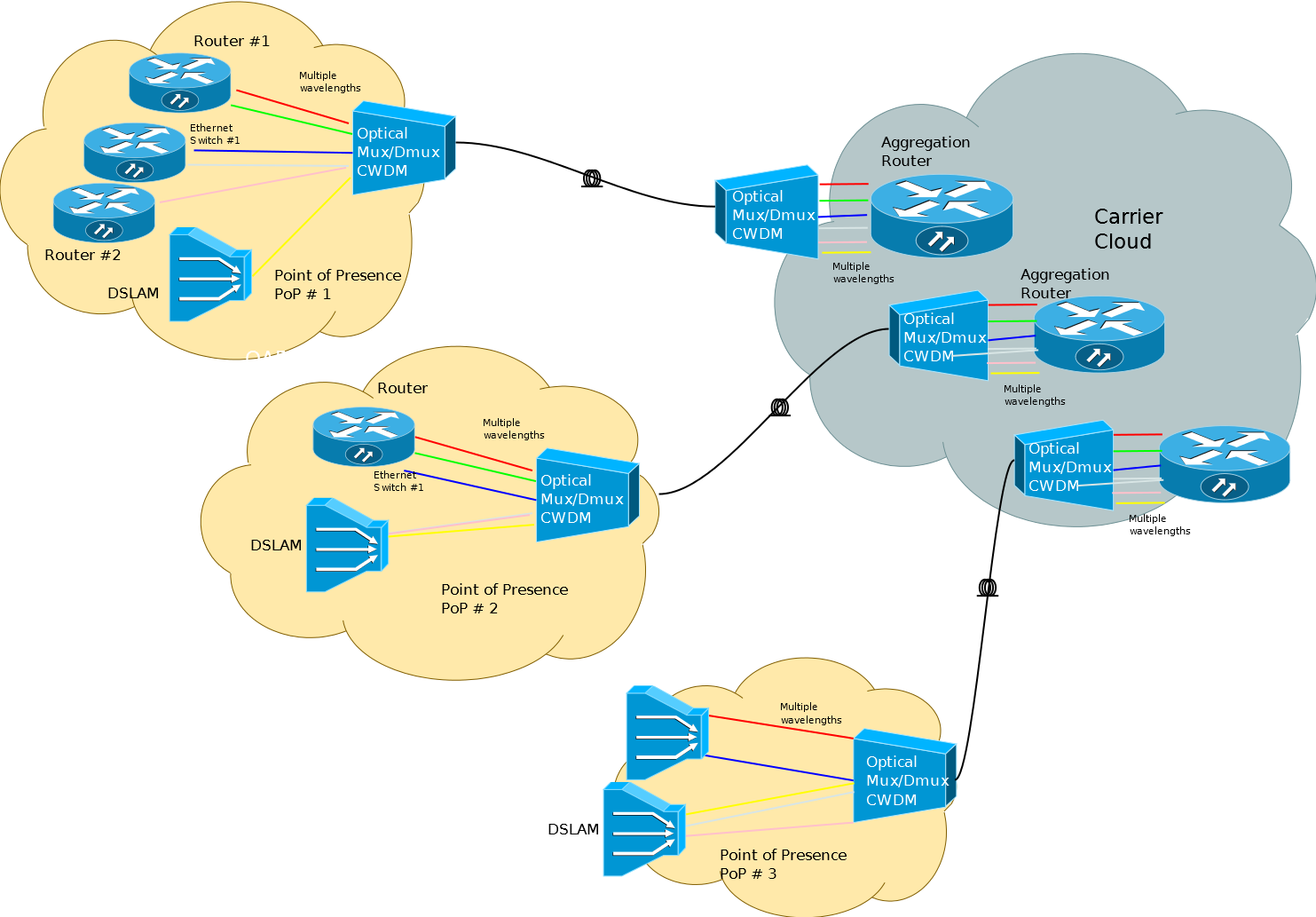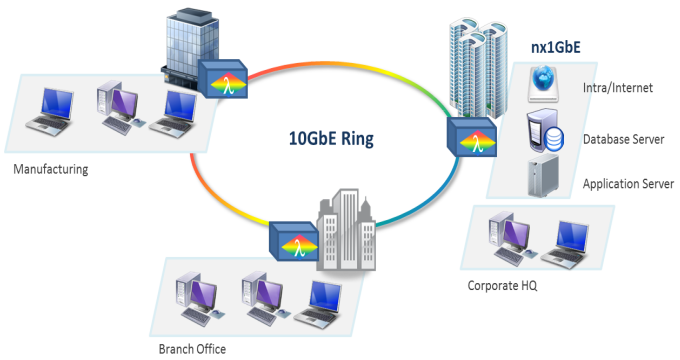Save Capex in Metro
Metro Solutions
Layer 3, layer 2 and layer 1 equipment
Low-cost WDM deployments in the metro networks
Carriers serving smaller metro-regional areas with moderate traffic growth projections can benefit from deploying WDM systems with a reduced number of channels. WDM systems supporting a 4-channel configuration, in addition to the more common 8-channel configuration (or 16 channel), present a compelling advantage for smaller metro-regional markets.
Systems with 4 channels can quadruple the available capacity over an existing network segment, while offering a lower first-in deployment cost than an 8-channel system. Carriers can pay as they grow, and upgrade to 8, 16, 32 or 48 channel systems when the network traffic justifies it. Low first-in cost and scalability are of paramount importance in such markets.
Benefits of WDM in the Metro space:
- WDM's low first-in cost and low channel granularity, enabling deployments to closely match guaranteed revenue streams and allowing capital expenditures (capex) to track revenue generation.
- WDM's simplicity of network design, implementation, and operation, which enables an easy adoption and implementation of the technology by carriers. That is in contrast to some of the more complicated metro DWDM systems that have been available in the past.

Metro Networks: rings, protected rings, hub & spikes

Enterprise LAN and SAN connection
WDM rings and point-to-point links are well suited for interconnecting geographically dispersed Local Area Networks (LANs) and Storage Area Networks (SANs). Corporations can benefit from WDM by integrating multiple Gigabit Ethernet, 10 Gigabit Ethernet and Fibre Channel links over a single optical fiber for point-to-point applications or for ring applications

